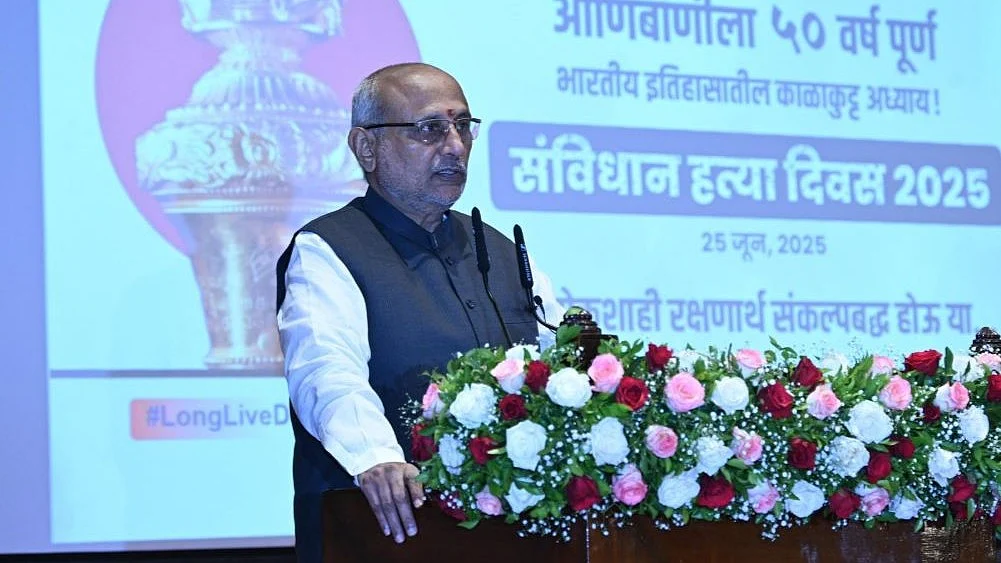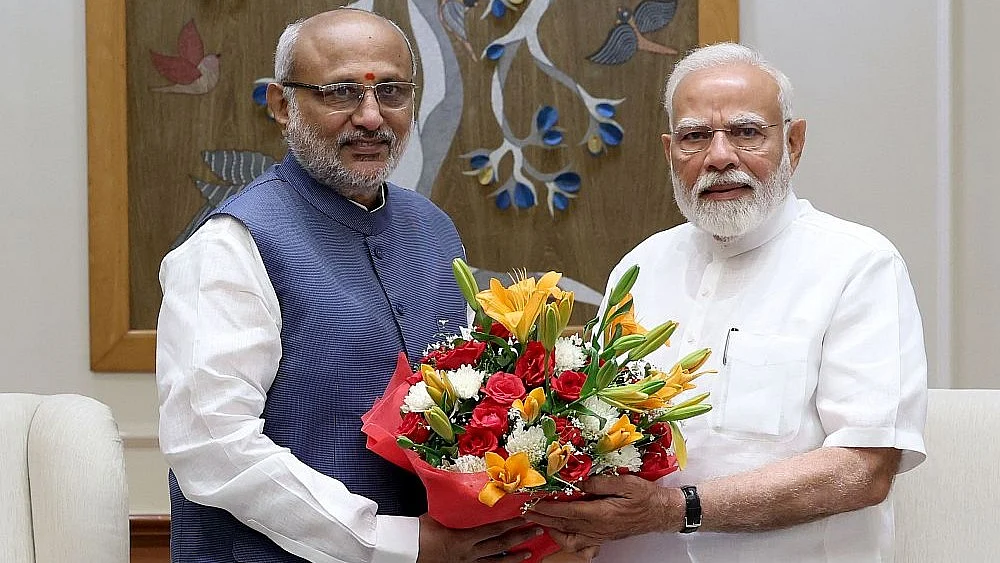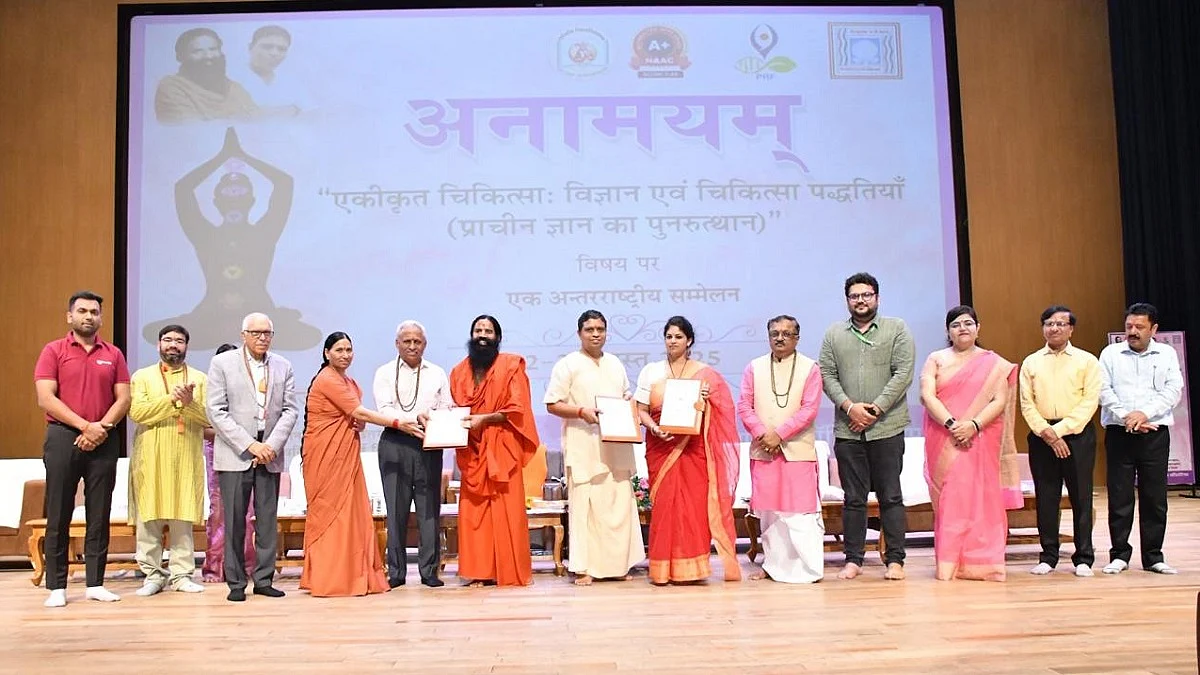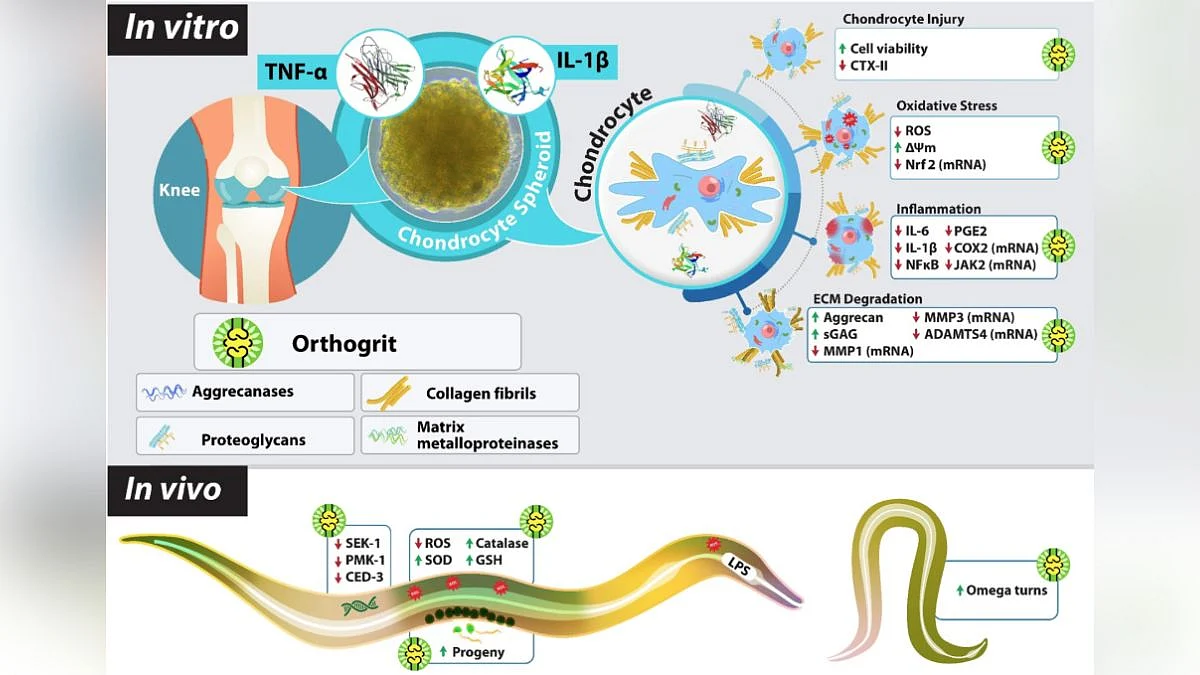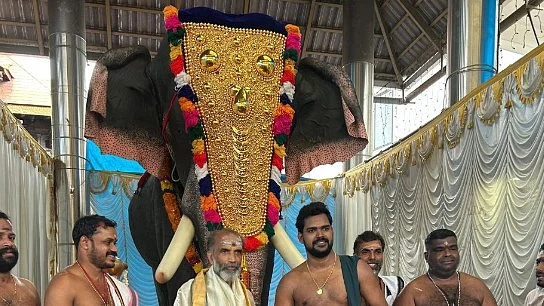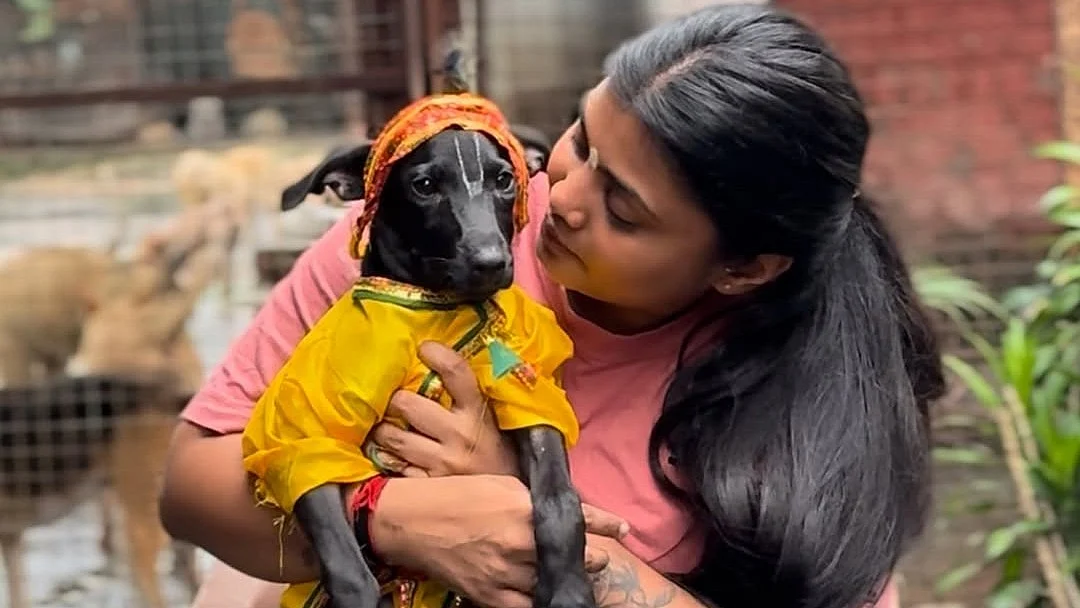When it comes to ayurveda, few names resonate as strongly as Acharya Balkrishnaji. As the co-founder of Patanjali Ayurved, he has played a pivotal role in bringing the ancient wisdom of ayurveda and the principles of healthy living into countless homes. Alongside Swami Ramdev, he has helped transform the way India, and the world, perceives yoga and ayurveda. In an exclusive interview with The Free Press Journal, Acharya Balkrishnaji opens up about ayurveda, common misconceptions, the journey of Patanjali Ayurved, and more.
Excerpts from the interview:
What first drew you to Ayurveda, and how did that journey lead to the creation of Patanjali? Could you also share the story of how you met Swami Ramdev?
When we look at the past, it seems it was already planned. We will come to know this later. When we live our lives, we come to know that what we were living, someone was making us work in a planned way. My mother was not literate, but was well-versed in Ayurveda thanks to my maternal grandfather. As children, when we used to fall sick, there were Ayurvedic medicines.
Later, I went to Gurukul. While studying the shastra, I learnt more about its connect with Ayurveda. The natural interest in Ayurveda was thus planted. I was moving from one place to another. Later I met Pujya Swami while studying in Gurukul.
However, it was still unclear what we will do in life, but we knew we had to take the spiritual path and contribute to society. During the 1993-94, while we were in Gangotri, we wanted to bring Yoga and Ayurveda to society. Not from a business perspective, though.
With a resolution, we dedicated our lives to the mission. In 1995, we formed our first trust called Divyayog Trust. But, it needed a lot of work and we did not have that kind of education, background, and knowledge. We just saw that we were treating people with Ayurveda, which was benefiting them.
Then the farmers joined in and mentioned how amla and aloe vera was not selling. So, we started making amla and aloe vera-based products. Then someone said their children do not do manjan (brush teeth), so we made Manjan toothpaste. We started providing solutions to problems, catering to the people and their demand.
Patanjali places a strong emphasis on research. Could you tell us more about that?
We studied the scriptures and learnt many things from traditional science. Our roots were the same, we just had to strengthen it. We set out to gain more knowledge and after equipping ourselves with the required knowledge, we set out to make the world understand it in a language they understand.
Even in ancient times, research was at the heart of knowledge. The science we inherited from our ancestors was the result of observation, experimentation, and study. Today, however, we must work within modern research protocols, parameters, and global standards. To achieve this, we brought together scientists and experts from diverse fields, training them to conduct research within the framework of Ayurveda.
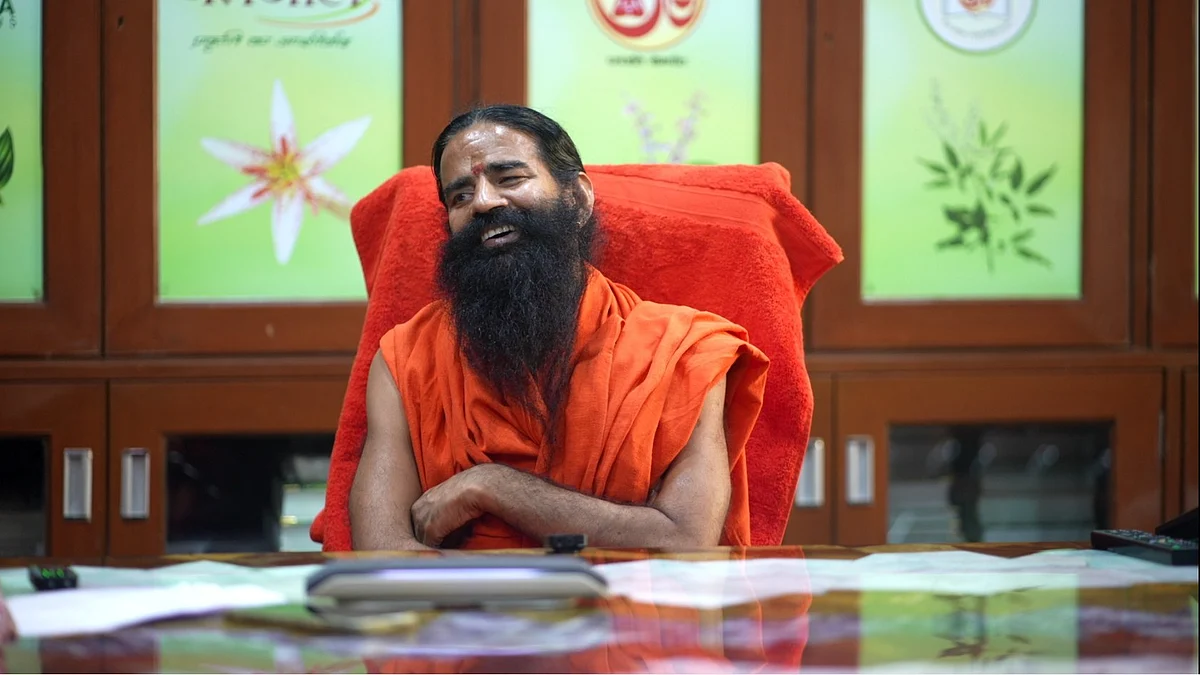
Today, the Research Foundation has more than 300 scientists, and soon we will have more than 500 scientists in the service or research work. We also have 5000+ centres in the country where our physicians give free consultations.
We make medicine based on research, deliver it to people and serve the patients for free – a model we have created and worked on. Today, we are proud to see our efforts reaching people not just across India, but around the world, improving lives on a global scale.
Can you tell us about some of the important research for Patanjali?
We have carried out extensive work in evidence-based Ayurveda, covering preclinical, in-vivo, in-vitro, animal, and clinical trials. Our approach follows a standard drug discovery process while adhering to ayurvedic protocols. Patanjali Research is equipped with a biosafety level-3 lab, NABL-accredited labs, and NABH-accredited hospitals.
Every medicine we develop goes through rigorous research. For instance, Livogrit has been studied extensively for various liver conditions like cirrhosis, fatty liver, alcoholic liver disease, and medicine-induced side effects — across different models, all yielding promising results. Similarly, Divya Lithon is designed for kidney stones, while Broncom addresses today’s growing problem of respiratory allergies with remarkable effectiveness.
We also produce over 500–600 classical Ayurvedic medicines. Traditionally, such medicines lacked standard operating procedures, quality control, or standardisation. We have brought these into the process, applying the same research protocols used for our evidence-based ayurvedic medicines.
Do tell us about ayurvedic products and research achievements that changed Patanjali.
We have worked extensively on raw material, as ayurvedic medicines are largely derived from herbs and minerals. Minerals, in particular, have faced misconceptions – for instance, being too harmful. But our research showed the opposite and have successfully cured kidney and liver.
There have also been myths around certain herbs. For example, when the demand for Giloy rose, some claimed it could damage the liver. This was based on a misleading report published in a journal. In the very same journal, we presented our research proving that Giloy not only causes no harm but can actually help in liver recovery. This kind of work has been central to changing perceptions and strengthening trust in Ayurveda.
There were products in the news over license issue and negative reports damaging Patanjali. Do you want to clarify or share your perspective?
We all have to follow the laws of the land. However, many of these laws were made during the British era and, sadly, are still in effect. Since then, there has been a lot of advancement in science and research. And those laws were made keeping allopathic medicines in mind and were universally applied to all medicines. This is something the government needs to reconsider.
In some cases, when certain ailments did not respond to treatment, it was officially recorded as “incurable.” As per the law, you are allowed to treat someone, but not to publicly state that you have cured them. Our so-called “mistake” was that we both cured and spoke about it. There was never any issue with the medicines themselves.
Ayurvedic doctors are not received as much respect as allopathic doctors. Your take?
This perception is slowly changing. About 20–25 years ago, the situation was different — many ayurvedic doctors would end up practising allopathic medicine. Today, it’s a matter of pride that ayurvedic doctors are committed to ayurveda, and even some allopathic doctors are prescribing ayurvedic medicines.
As per the Supreme Court’s order, an ayurvedic doctor who knows about allopathic medicines cannot prescribe them officially, and vice versa. But ultimately, any doctor’s aim is to heal the patient using the system they know best. If an allopathic doctor recommends Triphala Churna, it’s because he understands it helps cleanse the stomach and is harmless. The legal framework may be restrictive, but such openness from doctors would be a welcome change for us.
At Patanjali, how would you like to change this, since you have a hospital?
We are building a large integrated medicine setup. We are going to start allopathy. For emergency medicine, we will have allopathic and Ayurvedic doctors. Our aim is to find ways to cure the patient. Allopathic doctors will prescribe allopathic medicines, and ayurvedic doctors will prescribe ayurvedic medicines. However, the patient will have access to both under one roof.
What misconceptions about ayurveda are yet to be addressed?
One common misconception is that ayurvedic medicines or herbs can cause harm. This perception is fueled by two main factors: first, unethical ayurvedic practises by some individuals, and second, lack of strict action against such practises.
For instance, in Uttarakhand, two ‘ayurvedic’ medicines that were sold were brought to our lab for testing. We found they were selling allopathic pills in made under ayurveda license. The government needs to take strict action against such malpractises.
At Patanjali, we developed Mahishmati ayurvedic medicine with thorough research, and genuine work like this should not be questioned because of the wrongdoings of a few. Unfortunately, fake products exist in every field; there are also counterfeit allopathic medicines tat are sold. Thus, the focus should be on identifying and stopping such fraudulent activities that are bringing Ayurveda a bad rep.
How do you see ayurveda and yoga supporting each other?
The aim of ayurveda is prevention, which is our focus, too. When a person regularly practises meditation, yoga and pranayama, s/he will be able to maintain good health and not fall sick often. Even the person does fall sick, recovery can be easier. This is the very essence of ayurveda. In fact, yoga is an integral part of ayurveda.
At Patanjali, how are you working on this?
We work with every patient who comes to us through a holistic, integrated approach. Under one roof, our hospital offers ayurveda’s panchakarma, yoga’s shatkarma and kriyas, along with naturopathy. This brings together the best of India’s traditional healing practices into a single, ideal model.
Apart from products, what other services are Patanjali stores offering?
In many of our treatment centres, we provide free consultations with ayurvedic doctors. We also conduct yoga classes, and where space is limited, people are encouraged to join sessions in nearby locations. This way, we connect communities with both treatment and traditional medicine. In addition, Patanjali has launched a free telemedicine service for people across the country. And, we have many more initiatives planned for the future.

You have also forayed in the field of education...
Yes, Patanjali is actively involved through the Indian Education Board, which is already connected with around 400–500 schools. I would encourage more schools across the country to join us. We have designed a syllabus that not only covers regular subjects but also includes Sanskrit and Sanatan knowledge. Our work in education spans across Gurukuls, schools, an ayurvedic college, and even a university — all aimed at nurturing well-rounded individuals grounded in Indian values and global excellence.
For the next five years, what are your plans for Patanjali and ayurveda?
Our primary focus will be on advancing research. One of our major upcoming projects is Herbal World, where global botany-based healers, acharyas and gurus and their traditions will be in one place. It will be seen as an adventure plus knowledge park. It will stand for the herb-based tradition and will take two to three years.
We are planning to start the Ayurveda Gurukul through Patanjali. On the healthcare side, our telemedicine, consultancy, and delivery are free. Soon, people can get pure ayurveda-based medicines delivered at home. We are scaling our efforts on this front.
We are working on a botanical garden and the World Herbal Encyclopaedia. We will be documenting everything – from plant history, cultivation, treating diseases, and the new Vedic taxonomy.


